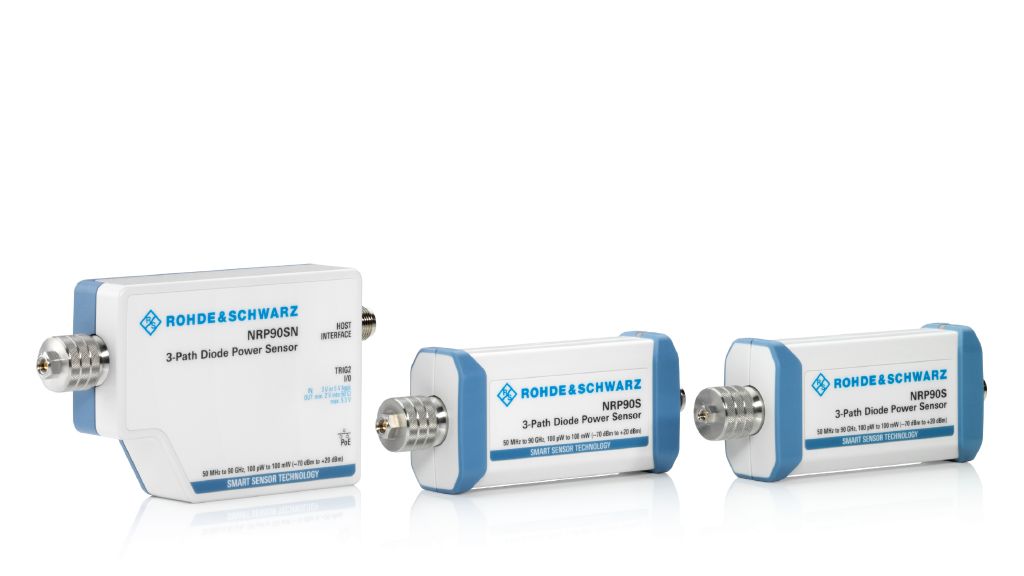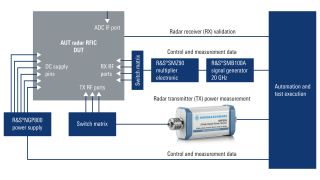Rohde & Schwarz solution
Diverse technology types, frequency bands and development stages, combined with non-RF requirements, such as digital connectivity, put extreme demands on power sensors. Automotive radar is undergoing a technology shift toward the future-proof E band, which requires a power sensor capable of reaching up to 90 GHz. R&S®NRP90S is ideally suited to this task. It is now possible for the first time to take accurate, repeatable measurements at full RF power over the entire frequency range directly in the E band.
The R&S®NRP90S and the R&S®NRP90SN are unique new first-in-class power sensors that check all the boxes. They can be used with all radar types up to E band with frequencies from 50 MHz to 90 GHz maintaining a wide dynamic range of 90 dB with –70 dBm sensitivity over the entire frequency range.
The R&S®NRP sensor series is extremely fast thanks to its three-path diode technology, which can take up to 50 000 readings/s, while accelerating test speed and reducing test time and cost. Sensor measurements are reliable with outstanding accuracy and repeatability. They also provide a high level of certainty that the correct measurement was taken the first time around.
Connecting the R&S®NRP90S or the R&S®NRP90SN sensor is quick and easy thanks to a wide range of RF connectivity options, including 1.35 mm and 1.00 mm coaxial connectors as well as waveguide adaptors. Digital connectivity for remote control includes both USB and USB/LAN models for use on PCs, power sensor base units in rack based test setups, or LAN connectivity for use with a manufacturing cloud.









